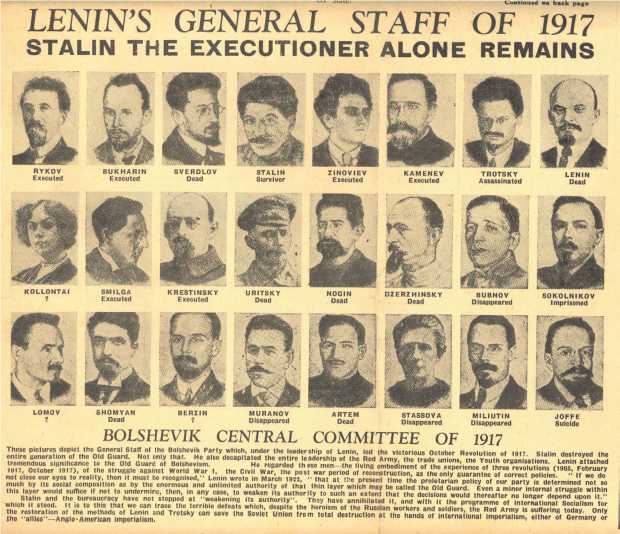Stalin's destruction of those in the Party he regarded as a major threat was achieved by the holding of three major show trials:
• In 1936, Kamenev and Zinoviev and fourteen other leading Bolsheviks were tried and executed.
• In 1937, seventeen Bolsheviks were denounced collectively as the 'AntiSoviet Trotskyist Centre', and were charged with spying for Germany. All but three of them were executed.
• In 1938, Bukharin, Rykov, Tomsky and twenty others, branded 'Trotskyite-rightists', were publicly tried on a variety of counts, including sabotage, spying and conspiracy to murder Stalin: all were found guilty. Bukharin and Rykov were executed; Tomsky committed suicide.
Remarkably, the great majority went to their death after confessing their guilt. An obvious question arises. Why did they confess? After all, these men were tough Bolsheviks. Physical and mental tortures, including threats to their families, were used, but arguably more important was their sense of demoralization at having been accused and disgraced by the Party to which they had dedicated their lives. In a curious sense, their admission of guilt was a last act of loyalty to the Party. In his final speech in court, Bukharin accepted the infallibility of the Party and of Stalin, referring to him as 'the hope of the world'.
Whatever their reasons, that the leading Bolsheviks did confess made it extremely difficult for other victims to plead their own innocence. The psychological impact of the public confessions of such figures as Kamenev and Zinoviev was profound. It created an atmosphere in which innocent victims submitted in open court to false charges, and went to their death begging the Party's forgiveness.
The legality of the purges
Stalin's insistence on a policy of show trials illustrated his astuteness. There is little doubt that he had the power to conduct the purges without using legal proceedings. However, by making the victims deliver humiliating confessions in open court, Stalin was able to suggest the scale of the conspiracy against him and thus to prove the need for the purges to continue.
Why did those who were purged by Stalin, shown in Source M, offer so little resistance?
This montage, composed by Trotsky’s supporters, illustrates the remarkable fact that of the original 1917 Central Committee of the Bolshevik Party only Stalin was still alive in 1940; the majority of the other 23 members had, of course, been destroyed in the purges.





 World History
World History









